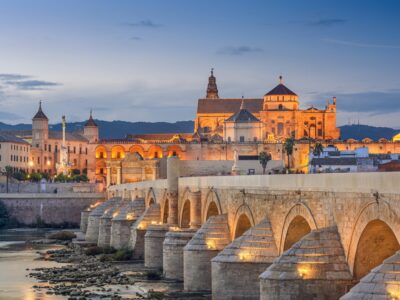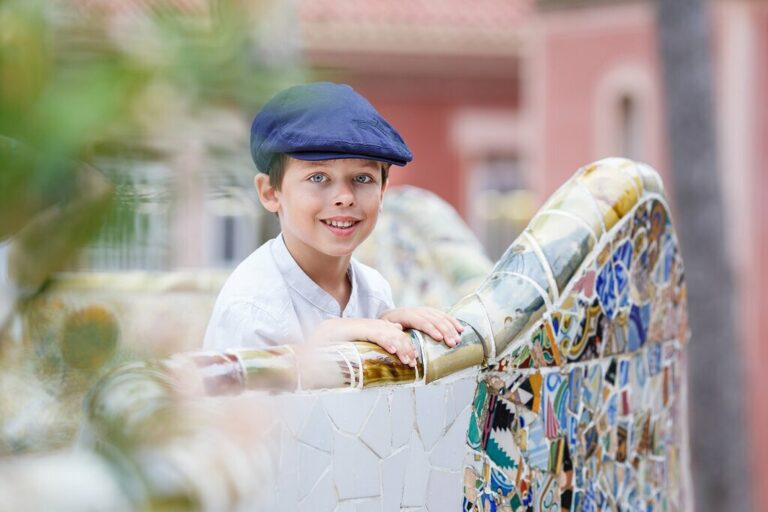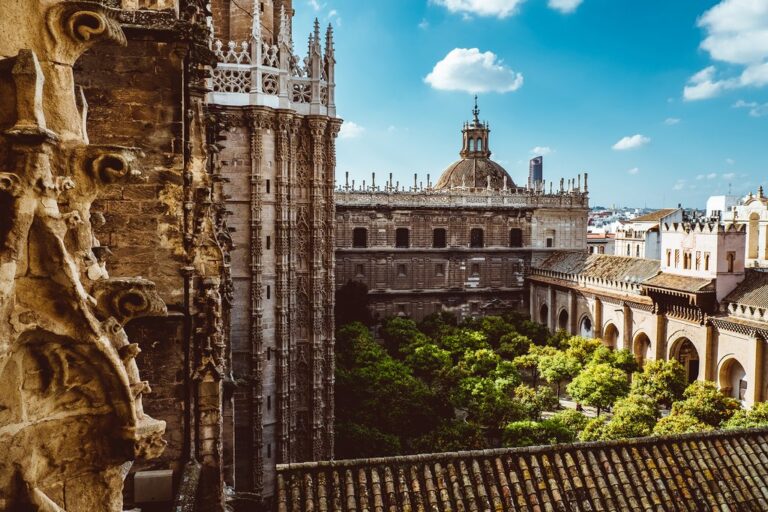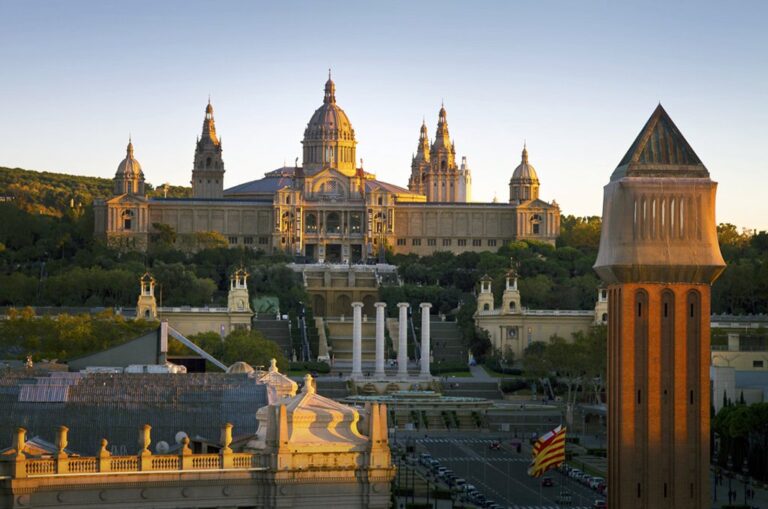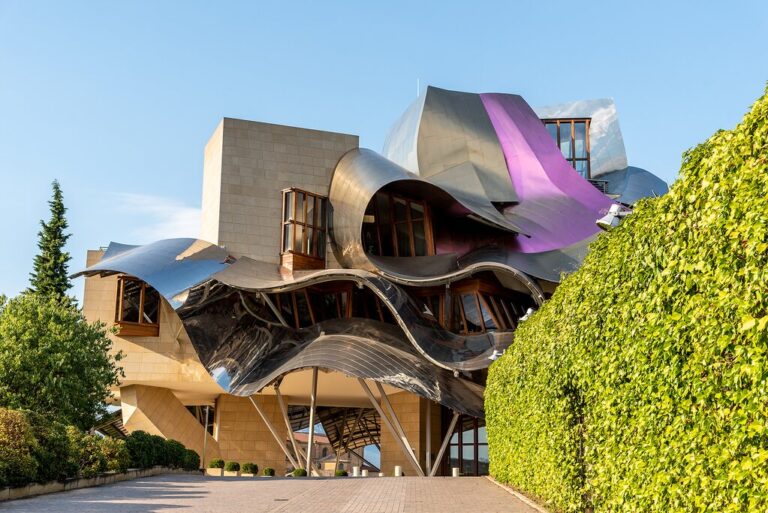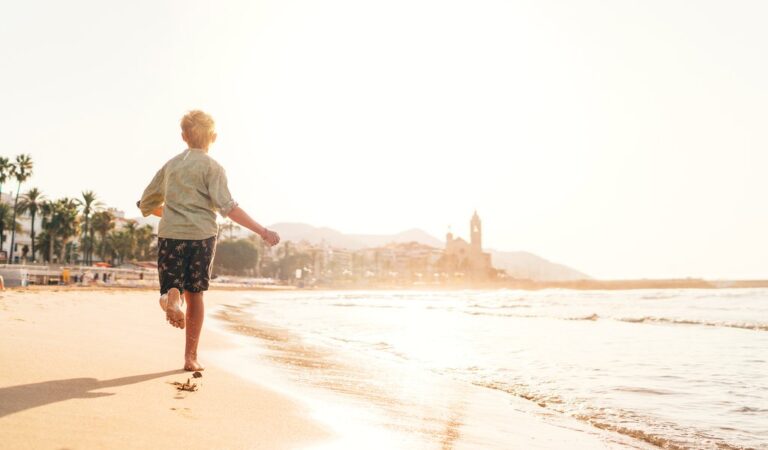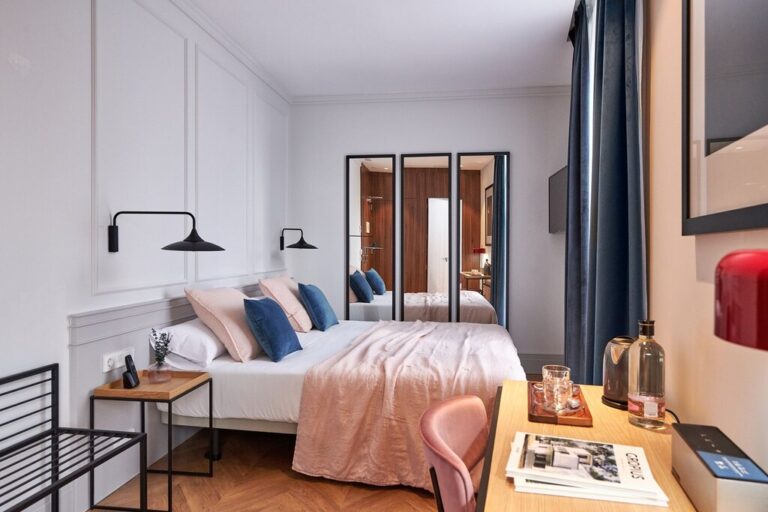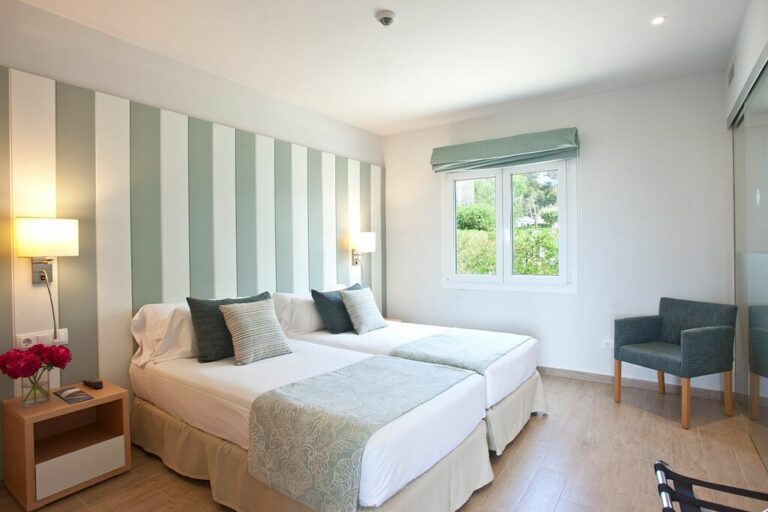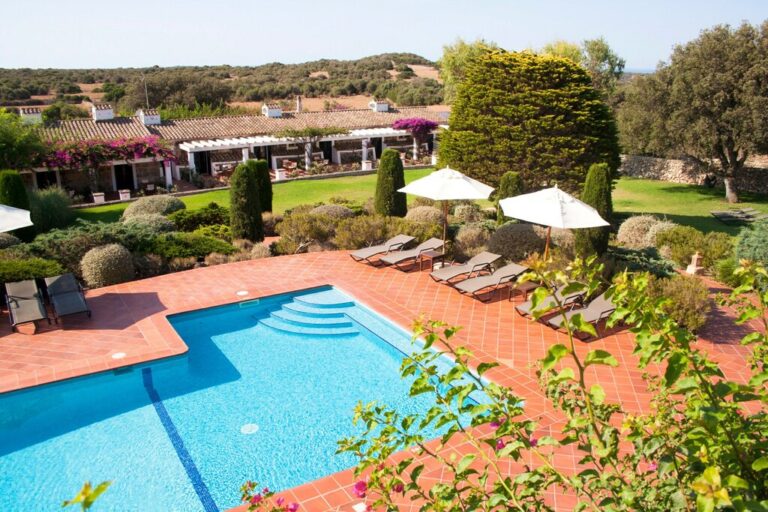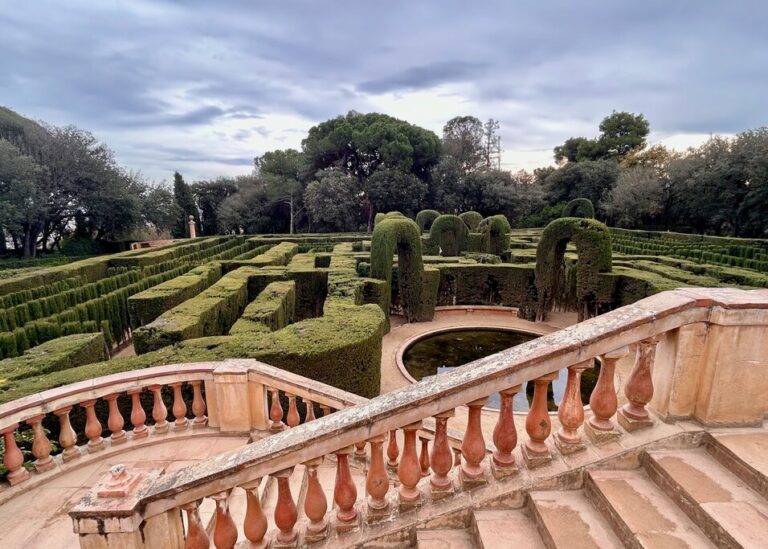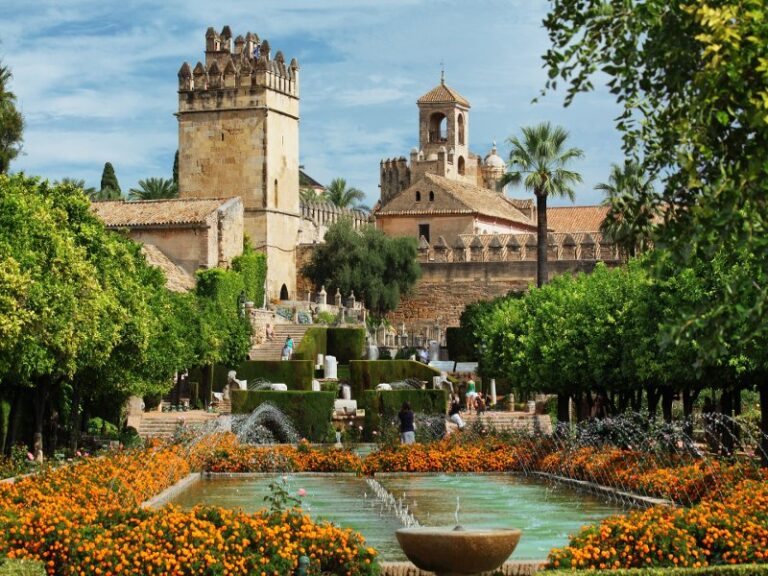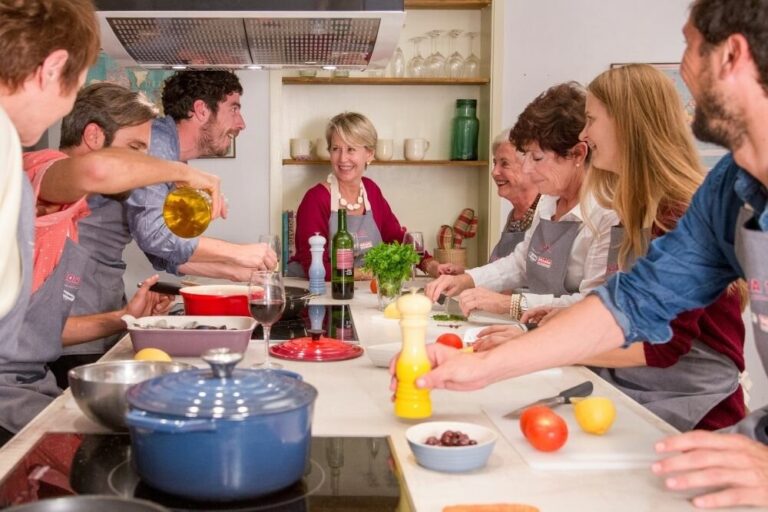Ultimate Food, Culture & Wine Tour of Spain – 20 days
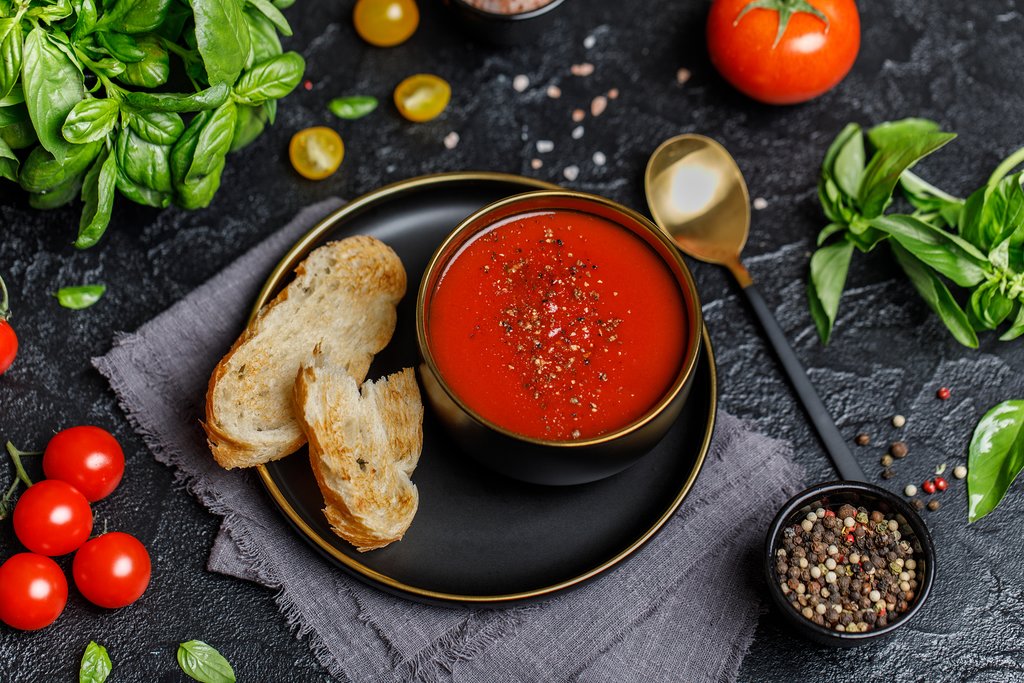
Like Italy and France, Spain is defined by world-class cuisine and stunning locales. Over 20 days, you’ll visit the highlights—including Madrid, Barcelona, the Basque Country, and Andalusia—while enjoying delicious food every step of the way. To complement the experience, you’ll also enjoy wine tours and visit olive groves, where you’ll learn the secrets to great Spanish olive oil.
Highlights
- Learn how to prepare tapas in a cooking class in Barcelona
- Take a wine tour in Spanish Basque Country
- Discover Madrid’s rich history on a private tour of the city
- Tour olive groves and learn the secrets to producing great olive oil
- Visit some of the highlights of Andalusia, like Seville, Ronda, and Málaga
Brief Itinerary
| Day | Highlights | Overnight |
|---|---|---|
| Day 1 | Arrival in Spain – Self-Guided Barcelona Tour | Barcelona |
| Day 2 | Private Tour of Barcelona by Land & Air | Barcelona |
| Day 3 | Private Cooking Class with a Master Chef | Barcelona |
| Day 4 | Private Transfer to Álava – Zaragoza City Tour & Wine Experience | Elciego |
| Day 5 | Private Transfer to Bilbao – La Rioja Wine Tour | Bilbao |
| Day 6 | City Tour of Bilbao | Bilbao |
| Day 7 | Day Trip to San Sebastián – Explore the Basque Coast | Bilbao |
| Day 8 | Private Transfer from Bilbao to Madrid – Tour Burgos | Madrid |
| Day 9 | Private City Tour – Discover Madrid’s Royal Legacy | Madrid |
| Day 10 | Free Day in Madrid – Evening Flamenco Experience | Madrid |
| Day 11 | Day Trip to Toledo – Private City Tour & Gourmet Lunch | Madrid |
| Day 12 | Train from Madrid to Seville | Seville |
| Day 13 | Private City Tour of Seville | Seville |
| Day 14 | Visit an Olive Oil Estate | Seville |
| Day 15 | Private Transfer to Málaga – Wine Tour in Ronda | Malaga |
| Day 16 | Pilgrimage from Málaga | Malaga |
| Day 17 | Day Trip to Granada – Tour the Alhambra | Malaga |
| Day 18 | Private Transfer from Málaga to Córdoba | Córdoba |
| Day 19 | Private City Tour of Córdoba | Córdoba |
| Day 20 | Private Transfer from Córdoba to Madrid – Departure |
Detailed Itinerary
Day 1: Arrival in Spain – Self-Guided Barcelona Tour
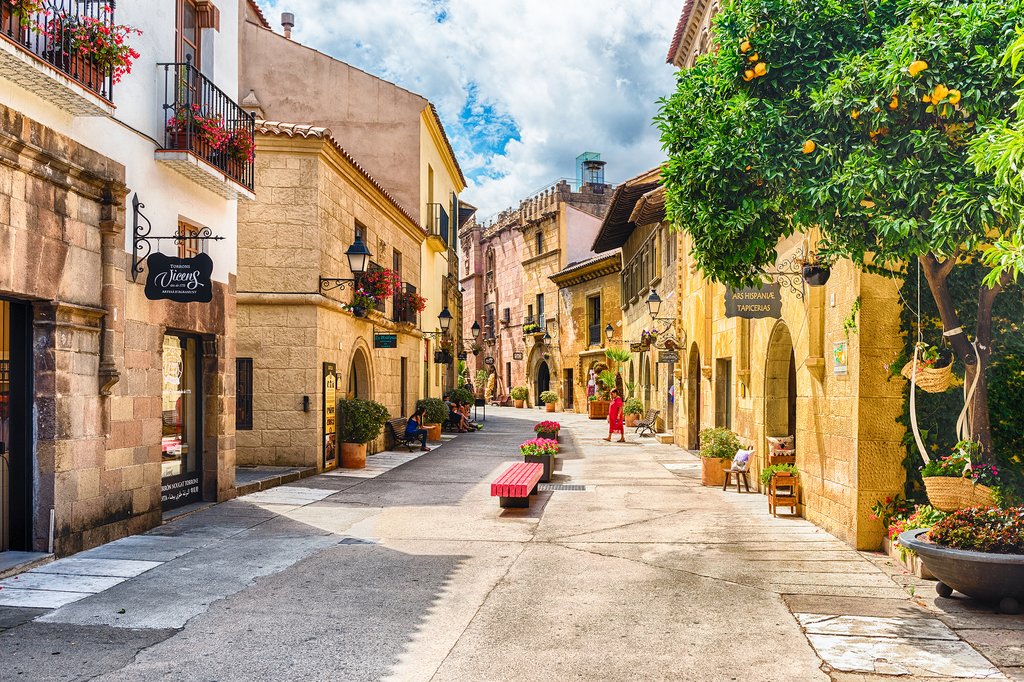
Welcome to Spain!
Upon arrival at Barcelona’s El Prat Airport, a private driver will transfer you into the city where you can check into your four-star hotel and unwind. You’ll then have the afternoon free to explore on a self-guided tour.
We recommend first visiting Mt. Montjuic and the surrounding area. Montjuic is a famous hill that stands 1,988 feet (606 meters) high and overlooks the Port of Barcelona. Take the Montjuic Cable Car from the metro station near Olympic Park, which takes you up to the 17th century Castle Montjuic and offers panoramic views of the city. You can also access Montjuic via cable car from Barcelona Beach and by funicular elevator adjacent to the cable car.
The Poble Espanyol is also fun to visit. Constructed in 1929, this open-air museum features over 100 recreated buildings in the style of traditional Spanish villages. When the sun goes down over the city, make sure you’re near the Magic Fountain of Montjuic, named for the dazzling display of water and colored lights that occur after dark. It’s the best free show in the city, one whose effect is heightened by the hundreds of spectators and a communal atmosphere.
Day 2: Private Tour of Barcelona by Land & Air
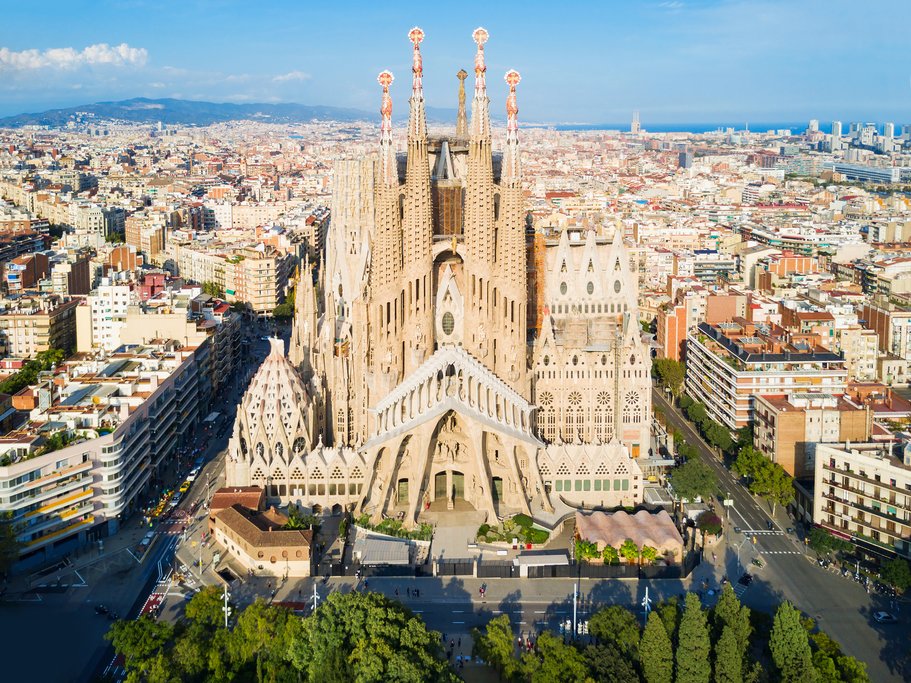
After breakfast at the hotel, you’ll meet a local guide who will whisk you away in a chauffeured vehicle for a half-day tour. The destinations are some of the most astounding works by the legendary Catalan architect Antonio Gaudí.
First, you’ll visit Park Güell. Located atop Carmel Hill in north Barcelona, this UNESCO World Heritage Site is a fine example of Gaudí’s boundary-pushing modernist style. Interestingly, it also has a storybook quality due to the bright colors and smooth organic shapes. The park takes up 42 acres and you’ll be able to marvel at every building as you stroll the myriad walkways and gardens. There are also incredible views at many points in Park Güell that look out over the city.
Next up is the Sagrada Família, the iconic Roman Catholic basilica that’s an impressive mix of gothic, Catalan-modernism, and Art Nouveau architectural styles. Despite construction on the church beginning in 1882, it’s still technically listed as being under construction and was only consecrated in 2010. Upon arrival, the guide will reveal insight into the Sagrada Familia’s fascinating history, and you’ll glean even more info as you explore the interior.
Then you’ll head to the famous boulevard Passeig de Grácia. It’s home to upscale boutiques as well as two buildings by Gaudí. The first is the Casa Mila apartment building, which earned the nickname “La Pedrera” because its facade resembles a stone quarry. Casa Batlló is another modernist masterpiece of a residential building. Locals have christened it Casa dels Ossos, or “House of Bones” due to the skeletal nature of its design.
After touring Barcelona’s streets, it will be time to change perspective and take to the skies on a helicopter tour. This excursion lasts a brisk 10 minutes, during which you’ll be able to look down on every major landmark in the city as well as the impressive coastline. It’s the perfect activity in which to cap your second day in Barcelona.
Day 3: Private Cooking Class with a Master Chef
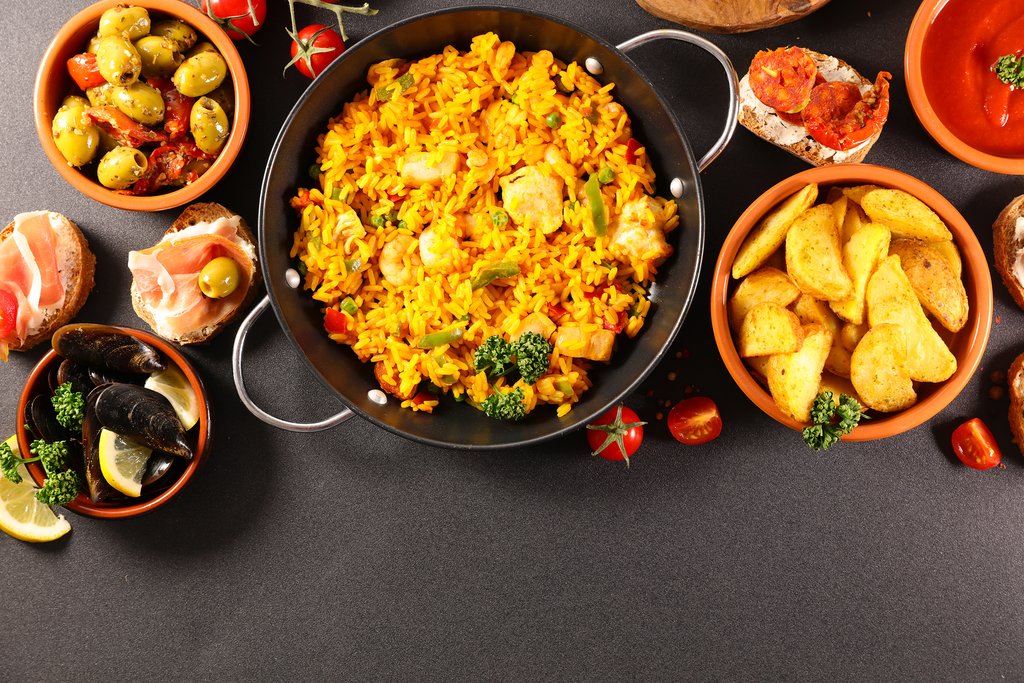
Today in Barcelona, food takes center stage as you participate in an exclusive cooking class of traditional Spanish cuisine. You’ll learn skills that you can use to impress friends and family back home when you cook them authentic Spanish tapas.
This gastronomic workshop begins with a visit to a local market with your private teacher/master chef. With fresh produce in hand, you’ll head to a private kitchen in downtown Barcelona and prepare your very own Spanish tapas from scratch under the tutelage of your chef. A fitting end to this experience is when you get to sit down and enjoy your delicious creations.
After the cooking class, you’ll have a few hours left to enjoy the city. If shopping is on your radar, visit the boutiques around the Passeig de Gràcia. And if the cooking class piqued your appetite, you can find many options for dinner complete with great local wine on Carrer De Blai in central Barcelona. It is known as the “tapas route,” as it features an abundance of spectacular tapas bars.
Day 4: Private Transfer to Álava – Zaragoza City Tour & Wine Experience
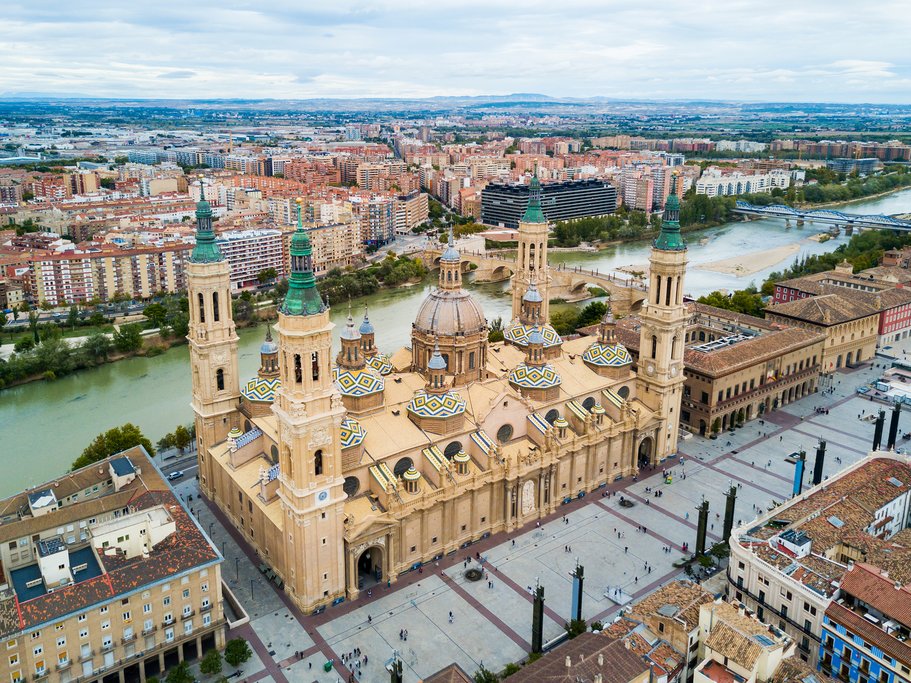
After breakfast at the hotel, a private driver will pick you up for your transfer to the Álava region, located in northeastern Spain’s famous Basque Country. It’s a lengthy trip, but you’ll break up the drive after 3.5 hours with a stop in historic Zaragoza. Located in northeastern Spain’s Aragon region, Zaragoza is a hotbed of well-preserved Mudéjar landmarks and Roman Catholic basilicas.
Upon arrival, you’ll meet a guide who will take you on a walking tour of the city. You’ll stroll the waterfront of the Ebro River as your guide points out Zaragoza’s grand highlights like the 18th century Basílica de Nuestra Señora del Pilar Cathedral and the 11th-century Aljafería Palace. You’ll also stop at a restaurant to fuel up with a local meal. Because Zaragoza is inland, expect more rustic cuisine with staples such as roast lamb, artisanal cheeses, cured meats, suckling pig, and wild game.
You’ll then hop back in the car for the final two-hour drive from Zaragoza to Álava. Your destination is a winery hotel designed by the legendary architect Frank Gehry. After checking in, you’ll enjoy a tour of the facilities and learn about the winery’s long and storied history. Afterward, you’ll have a gourmet dinner paired with great local wines before retiring to your room for the evening.
Day 5: Private Transfer to Bilbao – La Rioja Wine Tour
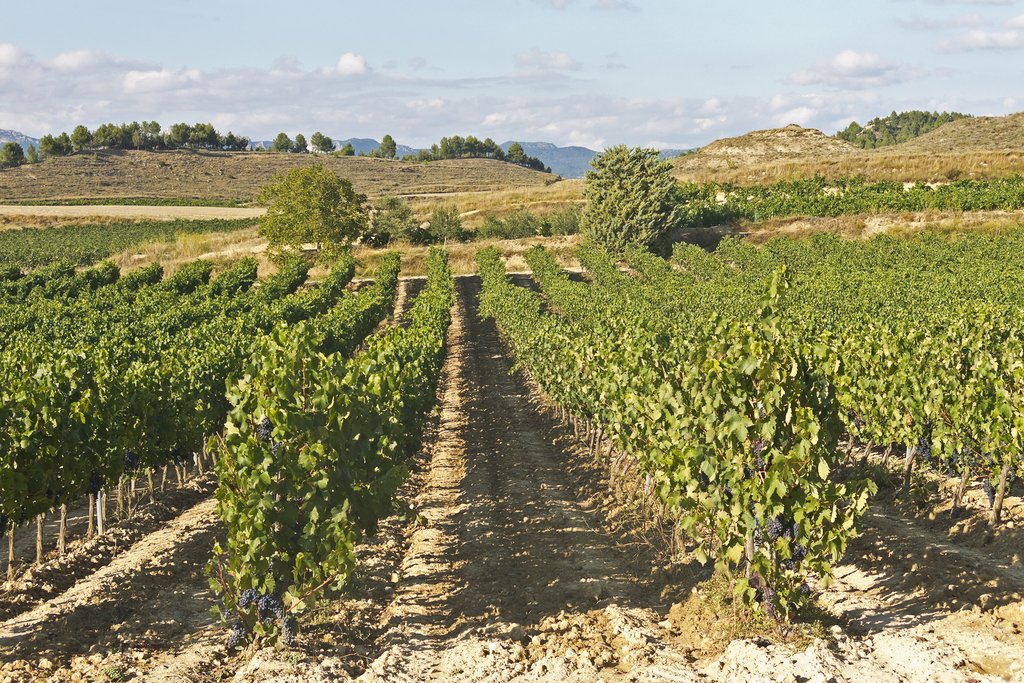
In the morning, you’ll head to the port city of Bilbao. However, your dalliance with the grape isn’t over yet. On the way to the coast, you’ll stop in La Rioja, perhaps the most famous wine region in Spain. La Rioja is a postcard of a province, with rolling green hills, alpine mountains, limestone peaks, medieval villages, and endless vineyards. There’s a sweet spot here called Rioja Alavesa, which is located between La Rioja and Basque Country. Here you’ll stop at a local winery and enjoy a tour with a professional guide.
These vineyards represent six centuries of winemaking defined by time-honored traditions. The tour begins with a visit to an authentic 15th-century winepress designed for barefoot grape pressing. You’ll also glean insight into the history of La Rioja and how it was settled in the 19th century by frustrated French winemakers after an infestation of parasites ruined their vineyards back home.
Throughout the experience, you’ll taste centennial wines as you make the acquaintance of professional vintners and specialists. It’s their passion and dedication that have resulted in the world-class varietals you’ll enjoy at the winery.
The tour concludes with a traditional lunch in a medieval Spanish town accompanied by your guide. Afterward, you’ll hop back in the car for the remaining hour-long drive to Bilbao. Upon arrival, you’ll check into your hotel, and you can have the remainder of the day free to relax.
Day 6: City Tour of Bilbao
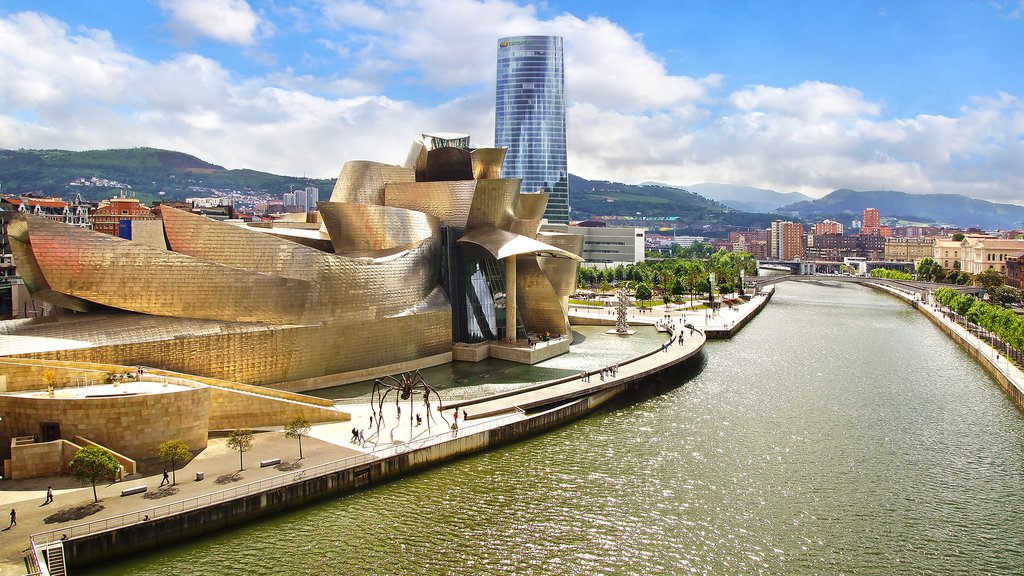
You’ll have the entire day to discover Bilbao, a marvel of a Spanish metropolis that is both modern and historic. Better yet, you’ll be accompanied by an expert travel guide who can lead the way according to your tastes and interests.
You can begin in Old Town. This is the beating heart of Bilbao, home to the oldest landmarks as well as many bars, restaurants, and boutiques. Major sights include the 18th-century Church of San Nicolás and the 16th-century Church of San Antón, which is dedicated to Anthony the Great, an Egyptian saint and father of monasticism. Other notable sights include the 14th-century Cathedral of Santiago and the Mercado de la Ribera, which, at 10,000 square meters, is the largest covered marketplace in Europe.
Of course, no visit to Bilbao is complete without stopping in at the Guggenheim Museum, a masterpiece of contemporary architecture by the legendary Frank Gehry. This glimmering titanium structure looks more like a sculpture than a building, with its sleek lines sensually curving in seeming defiance of physics. Inside, the museum’s 24,000 square-meter space houses a treasure trove of works from great artists such as Andy Warhol, Anish Kapoor, Jeff Koons, Louise Bourgeois, and Eduardo Chillida.
Day 7: Day Trip to San Sebastián – Explore the Basque Coast
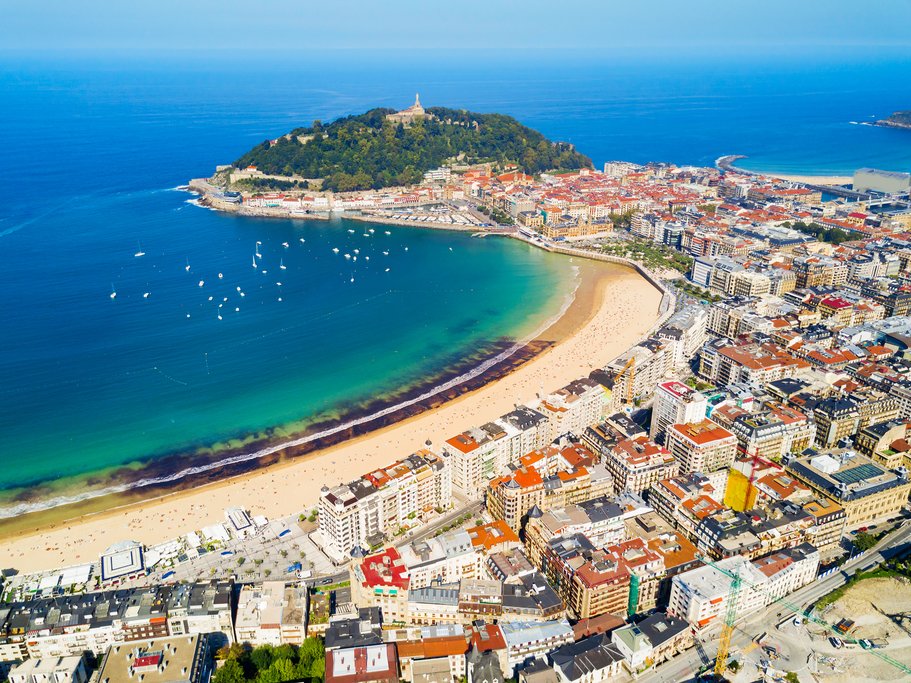
After breakfast, a driver will pick you up at your hotel for a day exploring the Basque coast. You’ll head east to the city of San Sebastián but will stop after an hour in San Juan de Gaztelugatxe. This island, located offshore of the Bay of Biscay, is connected to the mainland via a stone bridge, and atop it is an old church that, in one form or another, dates back to the 9th century. Game of Thrones fans will recognize Gaztelugatxe as the setting of the Dragonstone fortress in season seven.
After admiring the scenery, you’ll hop back in the car for the short drive to San Sebastián. Here you can wander the stone streets of the Parte Vieja (“Old Quarter”) and stroll along La Concha Promenade, which curves around the city’s main beaches, Onderreta and La Concha. For great views looking back at San Sebastian, take a ferry to the offshore island of Santa Clara, or ride the funicular railway up to Mont Igualdo, which offers sweeping panoramas from the western edge of the city.
Of course, no tour of San Sebastian is complete without indulging in its celebrated food culture. San Sebastian specializes in a type of tapas called pintxos (pronounced “peenchos”). Most bars, cafés, and restaurants in the Parte Vieja serve some version of these bite-sized delicacies, and naturally, they’re best paired with local wines. Here it’s possible (and indeed encouraged), to hop from pintxos bar to pintxos bar, grazing ’til your heart’s content.
Chat with a local specialist who can help organize your trip.
Day 8: Private Transfer from Bilbao to Madrid – Tour Burgos
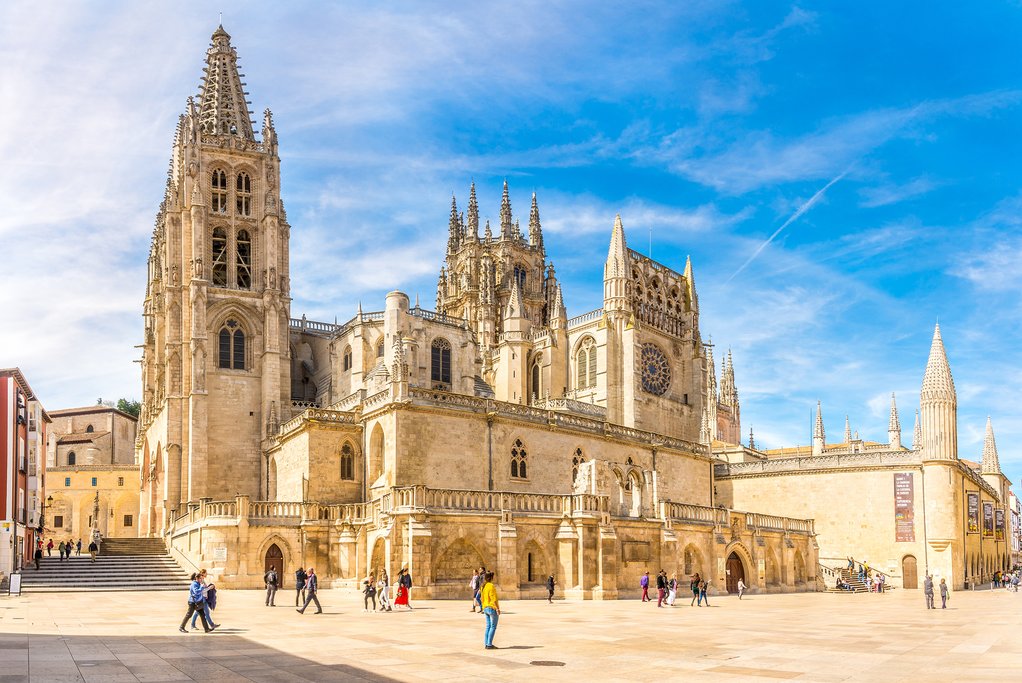
Today you’ll leave the Basque Country and head south for Spain’s capital. It’s a four-hour drive, but you’ll stop after about 1.5 hours in Burgos. This is another gem of a medieval Spanish city, as it’s the historic capital of the Castile region of the country. It’s a great place to get out and stretch your legs on a fascinating city tour.
You’ll walk the cobbled streets of Burgos’ medieval old town as your guide points out interesting sights. These include old monasteries and convents as well as the Burgos Cathedral. Dating to the year 1221, this was the first Catholic church built in the gothic style on the Iberian Peninsula. It’s a UNESCO World Heritage Site that was inspired by Notre Dame in Paris and later became the model for many gothic cathedrals built in the Kingdom of Castile such as the Cathedral of Segovia and the Léon Cathedral.
After touring Burgos, you will hop back in the car and continue the drive to Madrid. Upon arrival, you’ll check into your hotel and you’ll have the remainder of the day to relax.
Day 9: Private City Tour – Discover Madrid’s Royal Legacy
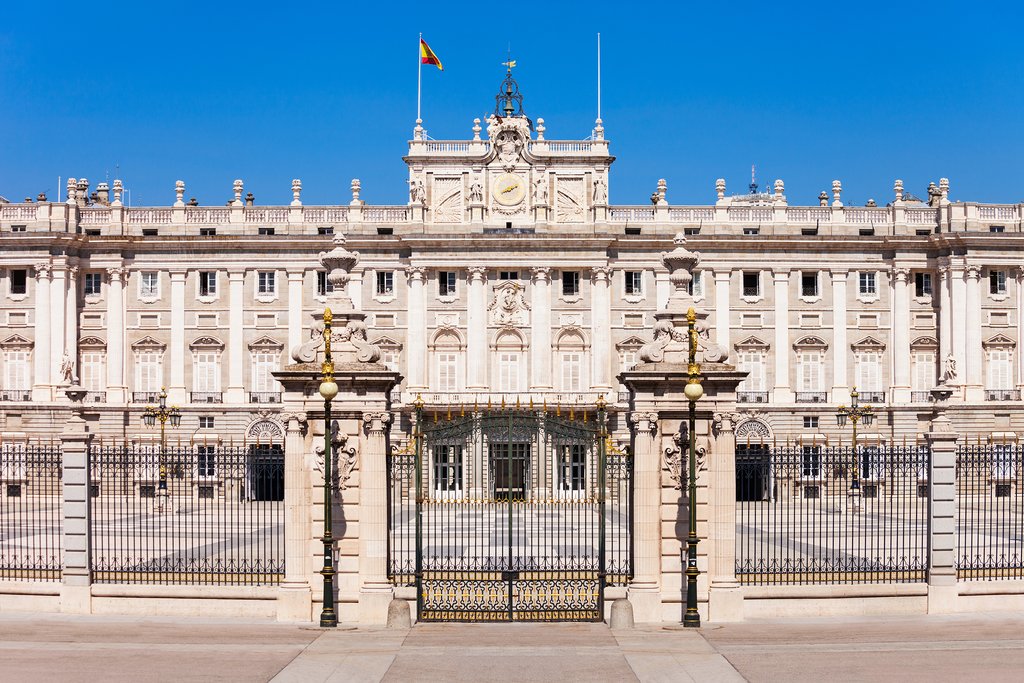
Today you will enjoy a half-day tour of Madrid led an expert local guide. Over the course of its long history, Madrid has seen many different eras, and today the city adorns itself with that history in its architecture, public spaces, and culture. An organized tour is ideal, as your guide can reveal insight into how these different time periods influenced Madrid’s different neighborhoods and buildings, as well as point out the most interesting sights.
One area you’ll visit that’s awash in regal splendor is the Madrid de los Austrias. It was built in the 16th century during the reign of the Hapsburg Dynasty’s first ruler, Charles I. Located in the city center, it’s home to one of the grandest plazas in Spain, the Plaza Mayor, which was once the heart of Old Madrid.
Also here is the Royal Palace, which was the official home of the Spanish monarchs until 1931. You’ll tour both the grounds and interior of this 3,418-room monument to opulence, entering the parade ground, the bedchambers of Charles III, several salons, the Royal Chapel, and the Hall of the Crown, which displays Charles I’s crown, scepter, and throne.
Later you could visit El Retiro Park. This 308-acre expanse of verdure is the green lung of Madrid, abounding with sculptures, fountains, and a man-made lake perfect for taking a boat trip. There are also must-visit gardens here including the Jardín de Vivaces (“Garden of Vivacious Plants”), Jardines de Cecilio Rodríguez (inspired by the Andalusia region), and a garden home to over 4,000 roses (best to see these blooms from May through June).
Afterward, you’ll return to your hotel for the evening.
Day 10: Free Day in Madrid – Evening Flamenco Experience
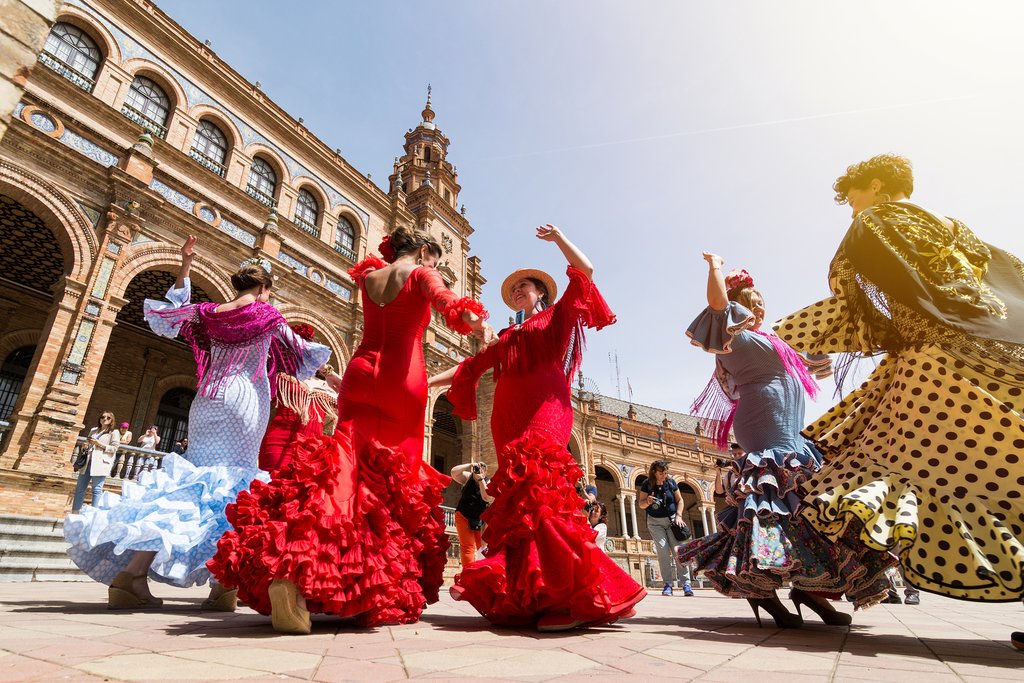
Today is a more relaxed day in Madrid free of rigid timetables. You can spend the morning enjoying the hotel amenities or get out and explore the city on foot. If you’re a sports fan you can opt for a treat in the form of a tour of the Estadio Santiago Bernabéu, the 81,000-seat stadium home to the Real Madrid football club. You might also consider taking a stroll along Fuencarral Street, which runs through downtown and is a popular shopping area full of upscale brands and designer boutiques.
In the evening you’ll have the chance to experience and appreciate one of Spain’s premier cultural offerings: flamenco. This musical style enjoys a rich heritage that dates back to the 9th century when the music and dances of immigrants in the Andalusia region of the country mixed with the cultures of local Moors and Jews. Over the centuries, the intermingling of these various influences synthesized to produce the style of Flamenco that has come to define Spanish folkloric music.
Taking in a Flamenco show is a must for any visitor to Spain. You’ll enjoy an even more comprehensive experience on a guided tour celebrating all aspects of this musical styling.
First, you’ll have a private tour of a guitar workshop where local artisans craft these traditional instruments. Second, you’ll stop at a dance academy that teaches the future stars of flamenco. Then you’ll visit a shoemaker who labors to produce the unique footwear for these dancers.
Finally, you’ll sit down for a sultry tango show as professional dancers move about the tablao (dancefloor). Throughout the performance, your guide will point out the intricacies and significance of the dance so you can better appreciate this artistic expression. It’s a show you won’t soon forget.
RIght about the time the performance ends, Madrid should be coming alive. This is a city that thrives at night, and to this end we recommend heading to Calle Ponzano. Located in the north of the city, this bohemian enclave the perfect area to enjoy a late-night tapas dinner followed by some bar-hopping.
Day 11: Day Trip to Toledo – Private City Tour & Gourmet Lunch
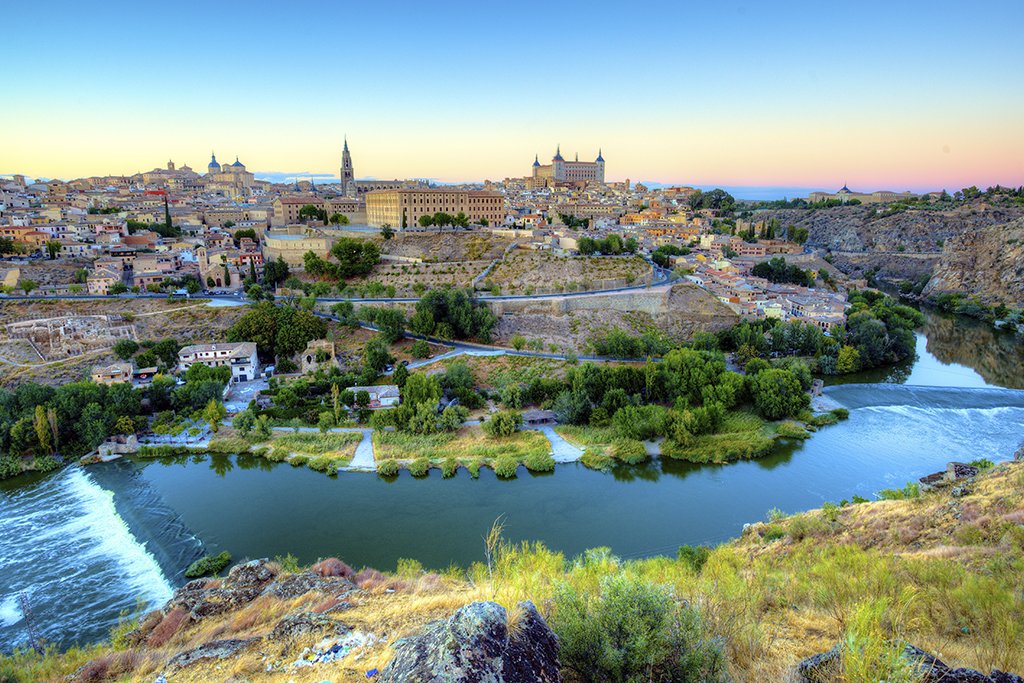
In the morning, a driver will pick you up for the one-hour journey south from Madrid to Toledo, a city that enjoys a dramatic location atop a gorge overlooking the Río Tajo. This is a historic city that, in the 16th century, was the capital of Spain.
It was back in the Middle Ages that Toledo was known as the “city of the three cultures,” a place where—legend has it—Christian, Muslim, and Jewish communities peacefully coexisted. You can see remnants of this in the old Arab, Muslim, and Christian monuments that still stand. These include the 15th-century Monastery of San Juan de los Reyes, the former Roman palace Alcázar de Toledo, and the Moorish Synagogue of Santa María la Blanca, which dates to the 12th century.
Accompanied by an expert guide you will visit these historic landmarks as well as others, including the grand 13th century Toledo Cathedral and the 12th century Church of Santo Tomé. Throughout it all you’ll tour the ancient streets of an incredible city that could aptly be described as an open-air museum. After all, Toledo does enjoy UNESCO World Heritage Status.
At lunchtime, you’ll head to the outskirts the city, where the ancient metropolis gives way to pastoral landscapes dotted with Spanish manor estates known as cigarrales. Amid this scenic backdrop, you’ll enjoy a gourmet lunch on the banks of the Tagus River with views looking back at Toledo.
This area is also famous for producing delicious marzipan, a sweet made from almonds, sugar, eggs, and honey. After lunch, you’ll visit another cigarrale that serves as a confectionary. Here you’ll participate in a workshop where, with the help of an instructor, you’ll learn the history of traditional Toledan marzipan as well as how to make this delicious treat. Needless to say, the workshop ends with you indulging in your sweet creations.
Day 12: Train from Madrid to Seville
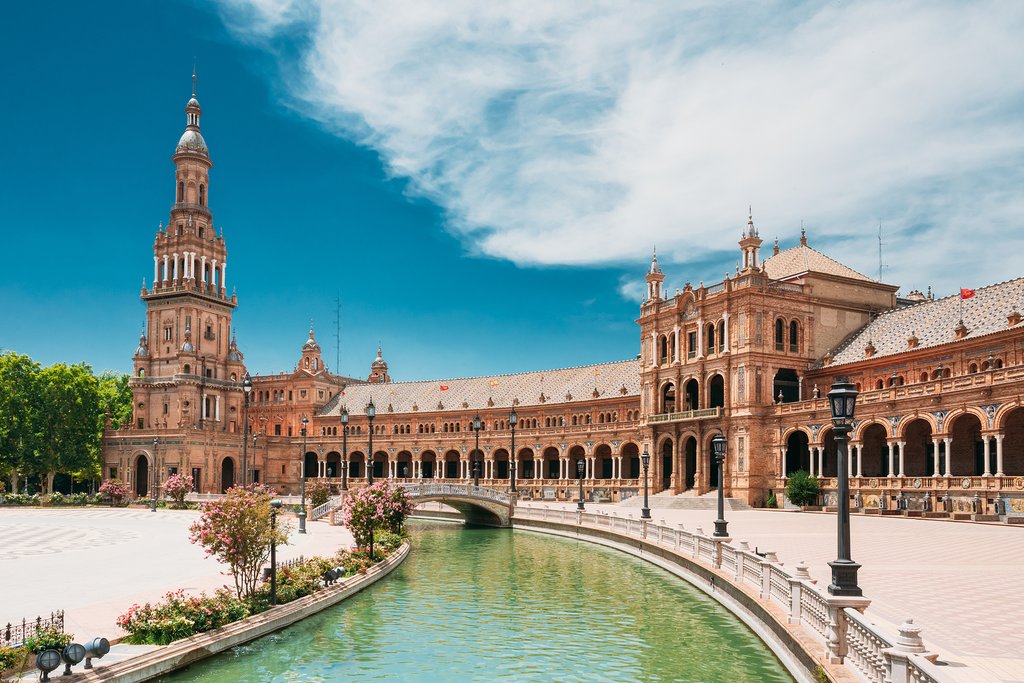
After breakfast in Madrid, a driver will pick you up at your hotel for the transfer to Atocha Train Station where you’ll board a high-speed train to Seville. The journey is a pleasant three hours, during which you can relax in your reclining seat and watch Spain’s beautiful landscapes pass by through the window.
Upon arrival in Seville, a driver will meet you for the transfer to your hotel for check-in. After settling in, we recommend you head out and explore a bit. Seville is the capital of Spain’s Andalusia region, and there’s no shortage of amazing sights here.
One example is the Plaza de España, which was built in 1928. For an impressive modern landmark, head to the old quarter and Plaza de la Encarnación. Here you’ll find Metropol Parasol, a massive wooden structure designed by German architect Jürgen Mayer and which opened in 2011. Known locally as Las Setas (“The Mushrooms”), this icon of Seville is indeed fungi-like and capped with a curved honeycomb roof. You can take an elevator to the top where you’ll be treated to stunning views of the city.
And there’s no better way to finish a day in Seville than by enjoying a sundowner at one of the city’s famous tapas bars.
Day 13: Private City Tour of Seville
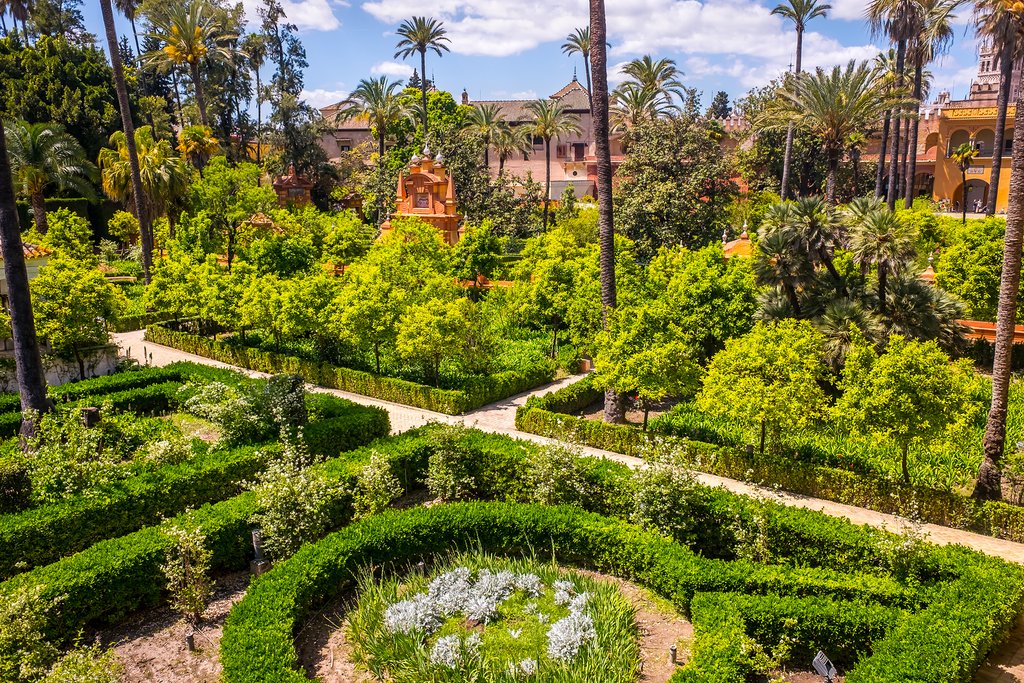
After breakfast, you’ll head off with a local guide to explore this ancient hotbed of culture.
You’ll visit the Seville Cathedral, a 15th-century Roman-Catholic church that’s home to the tomb of Christopher Columbus. It’s a UNESCO World Heritage Site, the largest gothic church in the world, and an awe-inspiring testament to pious grandiosity. You’ll also see La Giralda, which is the cathedral’s looming belltower. There’s a noticeable stylistic difference between the two structures, as this 12th-century pillar was originally built as a minaret for the Great Mosque back when Andalusia was ruled by the Moors.
Then you’ll travel back to the era of the Christan conquest when you visit the Alcázar of Seville. This royal palace was commissioned for King Peter of Castile in the 14th century and was built over the site of a former Muslim fortress. It features well-manicured gardens, and the building itself is one of the finest examples of Mudéjar architecture in the nation.
After stopping at the Alcázar, you’ll walk to the fashionable Santa Cruz neighborhood, which was once the Jewish Quarter in the city. It’s a colorful and well-preserved part of the historic center, with many options for cafés and tapas bars—the perfect excuse to take a break and enjoy some small plates washed down with local wine. You can also visit crafts markets and local shops where seasoned artisans produce intricate silverwork and elegant garment embroidery.
After completing the half-day tour, you can return to your hotel and relax or continue to explore the town. Not surprisingly, Seville’s gastronomic scene is incredible. For local tapas, you have a few options. Know that locals love to compliment an evening of tapas with a nightcap at a favorite watering hole.
Day 14: Visit an Olive Oil Estate
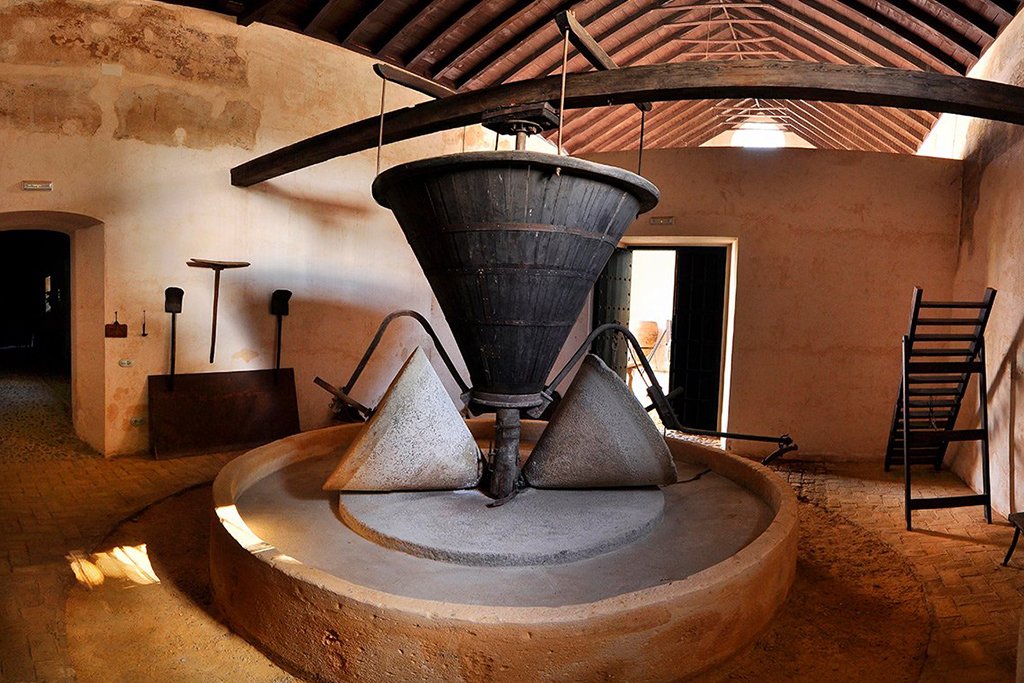
One of Spain’s most popular exports the world over is its high-quality olive oil. You’ll witness the production process firsthand on an exclusive tour of an Andalusian olive oil estate. Located just 30 minutes outside Seville, this estate has quite the history, as it was right here back in the 17th-century that Christopher Columbus’ son Hernando began exporting olive oil to the New World.
Upon arrival in the morning, you’ll be treated to a typical Andalusian breakfast of coffee, hot chocolate, churros, and toast with olive oil and tomatoes. Afterward, you’ll tour the old manufacturing center and view the 16th-century olive-oil presses. You’ll also visit the estate’s working presses, which use modern methods to produce the olive oil they export today.
Also at the estate is one of the biggest olive-oil museums in the world. It features exhibits detailing 150 varieties of olives from 13 countries. A visit to this museum reveals the characteristics and qualities of olives and how their oil has evolved to become one of the most popular culinary ingredients in the world.
You’ll also relax on the estate’s patios and enjoy some leisure time while basking in the beautiful Andalusian scenery. On the estate, you’ll find wide-open fields, purebred Spanish horses, Arabic gardens, and a private collection of horse-drawn carts from the 7th to the 19th centuries. There’s more than enough here to keep you and the family occupied.
The excursion ends with a tasting of olive oils produced on the estate, allowing you to put your newfound knowledge of this tasty ingredient to good use. After returning to Seville, you can spend the remainder of the day however you see fit. You could stroll the Plaza de América at Maria Luisa Park, walk around the neighborhood of Triana or pick a restaurant for a dinner accompanied by a flamenco show.
Day 15: Private Transfer to Málaga – Wine Tour in Ronda
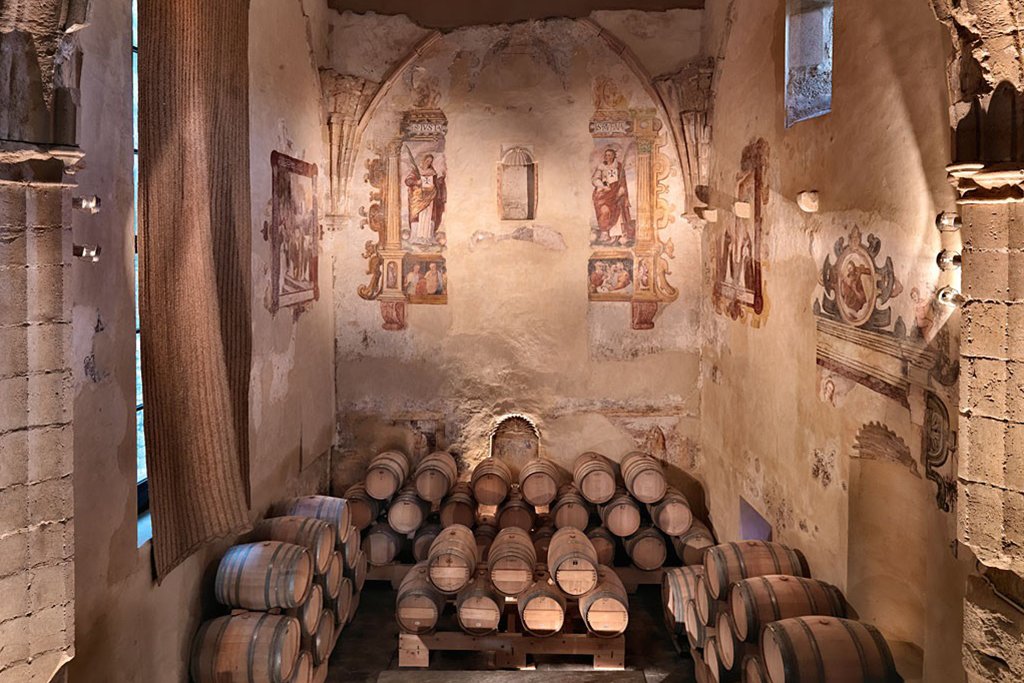
In the morning, a driver will meet you for your southward journey from Seville to Málaga. This Mediterranean port city is a mix of the old and the new. It enjoys an enviable location on Spain’s Costa del Sol, a stretch of Mediterannean coast that runs 98 miles (159 km) south from Málaga past Marbella towards Gibraltar, and which is famous for its abundance of golden beaches.
The journey takes about three hours, but you’ll break up the drive with a stop in Ronda. This ancient city dates back to the 6th century when it was first settled by the Celts. It’s a storybook locale carved out of a mountain and situated over a deep gorge, making it one of the most unique and dramatic cities in the country.
Like many places in Spain, Ronda is famous for its wine culture. You’ll discover this first hand by visiting a winery that was actually a convent up until the 16th century. The owner will lead a guided tour of the stunning grounds which feature, among other things, hanging vines, fruit trees, and well-manicured gardens. It’s amid this pleasant scenery where you’ll sit down for a lunch cooked specially by the owner himself. Naturally, this includes a tasting of the various wines produced on-site.
Afterward, you’ll continue the drive for two more hours from Ronda to Málaga. If there’s time left in the day, and if you have the interest, you can stop at some of the famous white villages nestled in the Sierra de Grazalema Mountains. One of the most beautiful is Zahara de la Sierra. Sitting atop a mountain, this village was a Moorish outpost until the early 15th century. You can see remnants of this in the form of the iconic castle perched atop the rocky mount
Map
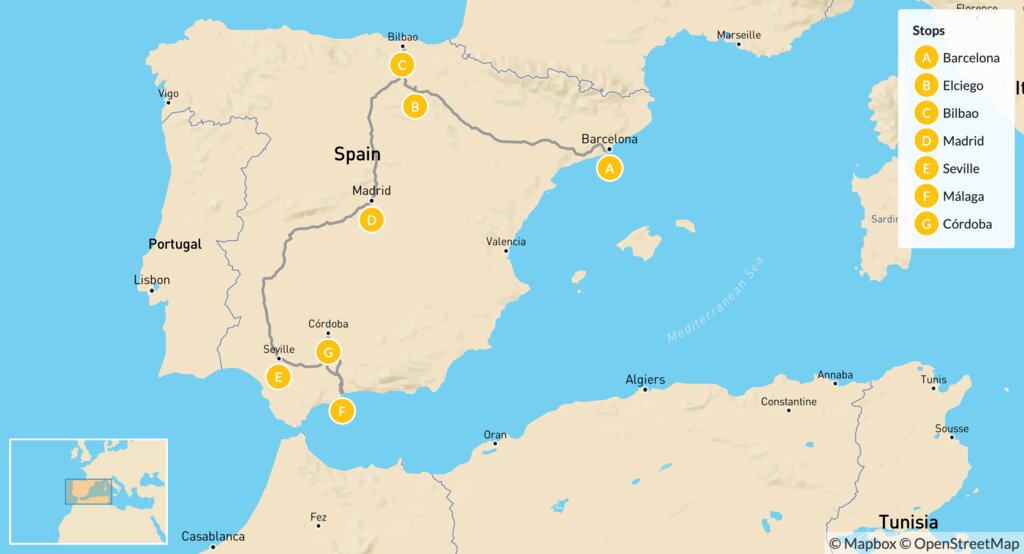
Map of Ultimate Food, Culture & Wine Tour of Spain – 20 days
T8137
Tours & Itineraries
Get inspired by trips other travelers have loved
Family Trip to Spain: Barcelona & Madrid – 8 Days
Spain North to South: Basque Country to Andalusia – 17 Days
Taste of Northern Spain – 9 Days
Luxury Northern Spain Road Trip: La Rioja & Basque Country – 7 Days
Family Adventure in Southern Spain: Málaga, Granada, Seville & More – 10 Days
Family Trip to Spain: Barcelona & Madrid – 7 Days
Hotel Advice
Unique places to stay, curated by Big Time Holiday specialists
Hotel Helen Berger, Valencia Hotels
Seth Santo Tomás, Menorca Hotels
Hotel Rural Morvedra Nou—Adults Only, Menorca Hotels
Best Experiences
Unique things to do, curated by Big Time Holiday specialists

